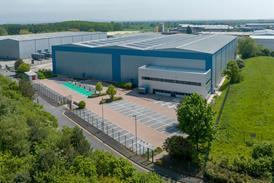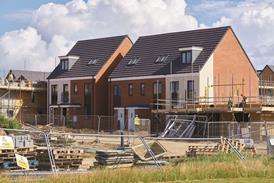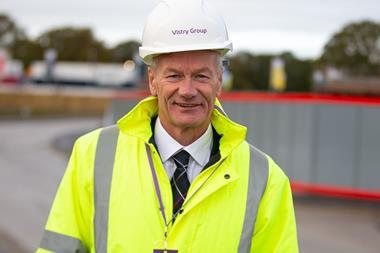Since the government announced the Future Homes Standard (FHS) in 2021, the housebuilding industry has been working hard to prepare for the new building regulations that come into force in 2025, requiring all homes to be 75% to 80% more energy efficient, and ready to transition to net zero emissions.

Much valuable work has been conducted by housebuilders to transition for 2025, and the government’s 2023 consultation on the full technical specification is eagerly awaited, so that the necessary legislation can be revealed in 2024. Initially promised in spring 2023, a confirmed date is hopefully imminent.
The 2025 FHS is the biggest shift towards energy efficiency the industry has ever experienced. The road to net zero is not optional but something the housebuilding industry must deliver. However, concerns have been raised with government on the impact any further consultation delay could have.
If housebuilding is to meet the requirements of the building regulations by 2025 – and in doing so, become a driving force for other UK sectors in transitioning to net zero – it is vital that the consultation process is launched to help all housebuilders model, assess and understand what is required so that we can prepare for the challenges ahead.
Achieving net zero is an incremental journey and so setting milestones is critical to reach the destination. Everything should now be geared towards meeting the 80% carbon reduction, looking particularly at the new building regulations 2021 parts F, L, O and S (FLOS) covering the ventilation of homes, conservation of fuel and power, overheating and electric vehicle infrastructure.
Meeting FLOS regulations involves a move away from fossil fuel systems on to low-carbon heating systems such as ground- and air-source heat pumps. This addresses the way homes are lit and ventilated, as well as looking at operations, focusing on supply chain, materials and transport.
The new house type designs we have in development complement the anticipated standards and incorporate dedicated plant rooms for new technology. Measures are being designed to mitigate overheating and provide factory-regulated advanced timber-frame solutions using the significant capacity from our own Vistry Works factories.
Live schemes are invaluable in helping the industry to prepare and the lessons learned are already being utilised in the delivery of a 310 zero-carbon (in-use) development for Warwick District Council in Kenilworth. With the same partner, 54 zero-carbon (in-use) homes have also been delivered using advanced timber frames, low-carbon heating and solar photovoltaic panels in Leamington.
The industry is busy preparing, despite not knowing the full technical specifications for what lies ahead in 2025. FHS homes will need to be larger but ahead of the consultations, the industry is having to best guess house types to suit zero-carbon-ready regulations and this has significant commercial and land viability impacts.
It is also unknown what transitional period will be factored into the 2025 deadline or whether the grid and electricity infrastructure will be ready. We recently tried to alter a scheme to air-source heat pumps but this was not possible due to lack of capacity in the grid, and this is a big area of concern. Investment is vital to electrify heating systems via enforcement in local networks and this takes considerable time and needs to be planned at the earliest stage possible.
The skills gap must also be addressed: the UK-wide shortage of accredited installers needs to be resolved and fast – especially with air source heat pumps – to ensure installations will meet the rigorous checks required.
And, as ever, awareness for the end user cannot be overlooked. Moving away from gas heating is a big cultural shift and home occupiers will need to adapt. It’s up to the housebuilders to help customers and clients understand the many benefits of living in more sustainable and low-carbon new homes.
For the FHS to be implemented in 2025, housebuilders need to know what’s being asked of them – by local authorities as well as by government – with clear and consistent metrics across the board, as well as flexible guidance to mitigate local challenges such as network and supply issues. When the consultation comes along it will be a significant milestone for the government’s net zero targets and a brighter future.
Jack Brayshaw is head of technical innovation at Vistry Group































No comments yet